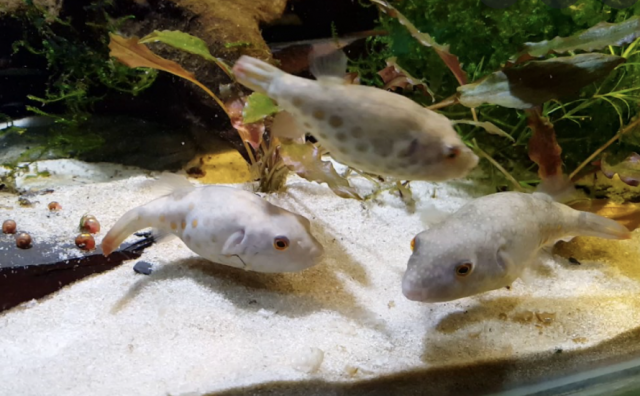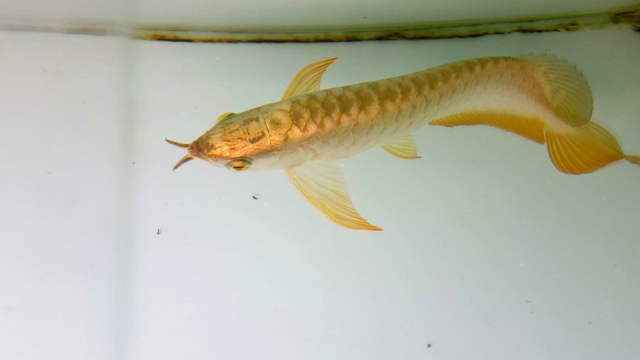Favorite tankbusters are probably puffers and tanganyikan cichlids.
a group of 6-8 pea puffers will work great for 20 gallon desktop tank and they definetely have the attitude of their larger cousins.
I'm not a fan of lurker puffers, but I've heard abei are somewhat active and german keepers have had success keeping them in groups by housing them like pea puffers as they aren't as aggressive as the typical lurkers common in the US hobby

and as always there's the classic schoutedeni puffer.
Beyond that, lamprologine tanganyikan cichlids certainly aren't tankbusters but they do have loads of personality and unique breeding behavior compared to mbuna or even tropheus.
Altolamprologines get to a respectable 6" max for all three species and the heavy built calvus/compressiceps remind me of groupers while the more streamlined altolamprologus fasciatus reminds me more of a snapper.
The neolamprologus genus is one of my favorite genera and they have many stunning fish. Among rock dwellers, the sexfasciatus, tretocephalus, pulcher, brichardi, gracilis, helianthus, nigriventris, leleupi, buescheri, and cylindricus all among my favorites although they can all be very aggressive when breeding. Large sexfasciatus and tretocephalus males may reach 6"-7" on rare occasions, but most of these species should get to around 4" normally.
The shell dwelling branch of neolamprologus is even smaller than the rock dwellers ranging from 1.5" for the colony dwelling multifasciatus, while dull is one of the most interesting cichlids in terms of behavior to 6-7" for the giant callipterus males. Most of the other shell dwellers can be kept in a pair in a 20-30 gallon and some favorites include meleagris, occelatus, brevis katale, and ornatipinnis which are around 2". Some beefier ones include boulengeri and calliurus which reach around 3" and will hold their own with larger rockdwellers.
Julidochromis are also a fun genus that remind me of a less aggressive form of melanochromis. Especially the ornatus and marksmithi are stunning black and yellow fish.
An underrated genus of lamprologines is telmatochromis. These rockdwellers dont have the coloration of neolamprologus, but they do have a menacing appearance and powerful jaws reminding me of hoplias. They range from 3" for the shelldweller form of temporalis shell to 6" for dhonti. These contain some of the most aggressive tanganyikans on par with the rock dwelling neolamprologus although telmatochromis vittattus is a pretty tanganyikan that is relatively peaceful.
Outside of neolamprologines , the paracyprichromis and cyprichromis genus are relatively peaceful schoolers ranging from 4"-6" with stunning colors, they kind of remind me of colorful sardines.
Xenotilapia and callochromis are peaceful bottom schoolers ranging from 4-6" with interesting behaviors and funky appearances. Rather fragile fish, but they remind me of social gobies.
Then there's Ophthalmotilapia which reminds me of saltwater puffers in their fancy nests in the sand. A bit aggressive but nowhere near the neolamprologines. They also have long trailing fins. They get a bit larger from 6"-8"
Here is a massive community tank with many of the species I listed. Contrary to the stigma of cichlids being aggressive, this is a very peaceful tank (helped by the size of it).
But with tanganyikan cichlids its very possible to build a peaceful community even in a reasonably sized tank.





